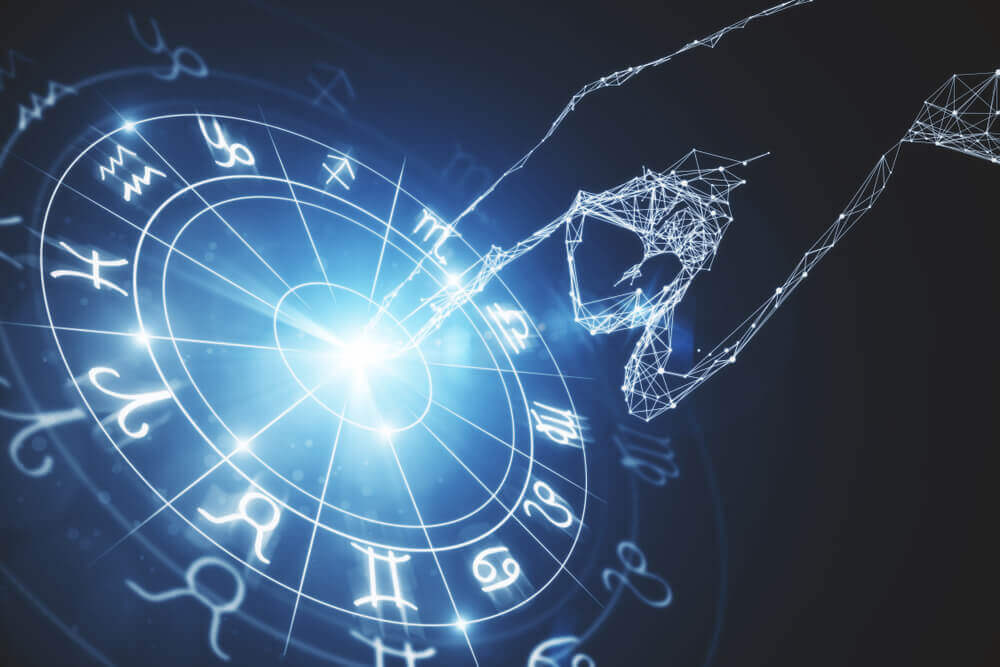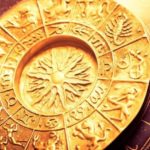The Differences between Western Astrology Philosophy and Vedic Astrology is a very interesting topic. Here’s an insight into Western astrology vs Vedic astrology.
Zodiac
The zodiac system used is the single most glaring difference between Western and Vedic Astrology.
Obviously, the position of the planets relative to the earth in the night sky is not a variable across time. In both Western astrology vs Vedic astrology, 360 degrees are divided into 12 signs. However, Western astrologers use the Tropical zodiac. The apparent orbit of the Sun around the earth which also governs the seasons determine the start and endpoints of each zodiac sign in the Tropical zodiac. When the Sun’s apparent orbit crosses the equator, going North, it is the start of the spring season and the sign of Aries. While the opposite movement southward, in fall, indicates the start of Libra. The signs are then divided accordingly into 30-degree intervals. The summer and winter solstices also fall in between these divisions.
Vedic astrologers, on the other hand, use the Sidereal Zodiac system. This is based on the actual positions of the constellations in the sky where the starting point of Aries is usually opposite the star Spica.
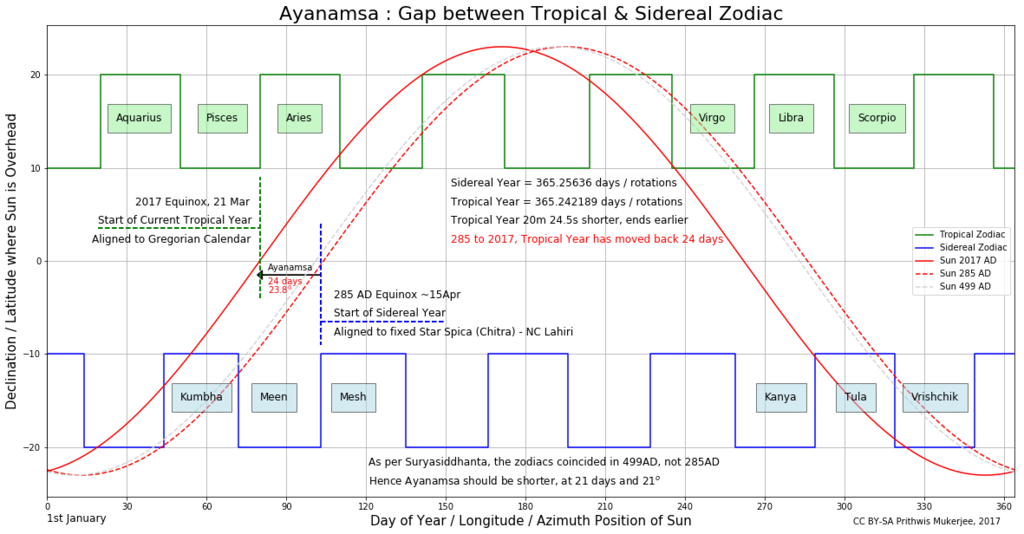
It is also argued that the tropical system is a good system as it follows the seasons and the reality of what we see around us as opposed to distant planets. On the other hand supporters of the Sidereal system say that their system is more accurate as it follows the actual positioning of the stars of Aries. However, a counter-argument is that each constellation in the sky is not exactly 30 degrees wide.
Origins
Ancient astronomers and astrologers (many people were both) in ancient times observed the stars above and their correlation with human lives. Interaction across countries and continents was not as easy and quick as in more modern times. So each region’s own study of astronomy and astrology grew independent of the others. As the subject matter of study was the same, there were naturally many points of similarity. Western Astrology origins evolved from the knowledge of the ancient Greeks and Egyptians. while Vedic astrology has evolved from the ancient books of the Vedas. The Rishis or seers of the Indian subcontinent defined the concepts of Vedic astrology thousands of years ago. Thus, Western astrology history and Vedic astrology origin are very different.
Planets And House Rulership
Western astrologers use all of the ten ‘planets’ from Sun to Neptune, Uranus and Pluto. Western astrology uses the comet Chiron and four major asteroids. The rulerships of Western astrology zodiac signs Scorpio, Aquarius and Pisces in Western astrology are Pluto, Uranus and Neptune respectively. Vedic astrology uses only the nodes of the moon and the visible planets. Additionally, there are gulika and mandi as well as various calculated points in a chart that are used in Vedic astrology.
The lunar nodes are mathematical points that are calculated to determine the point at which the moon and the Sun’s apparent path around the earth intersect. In Western astrology, these two points are called the North Node and the South Node and in Vedic astrology, they are called Rahu and Ketu.
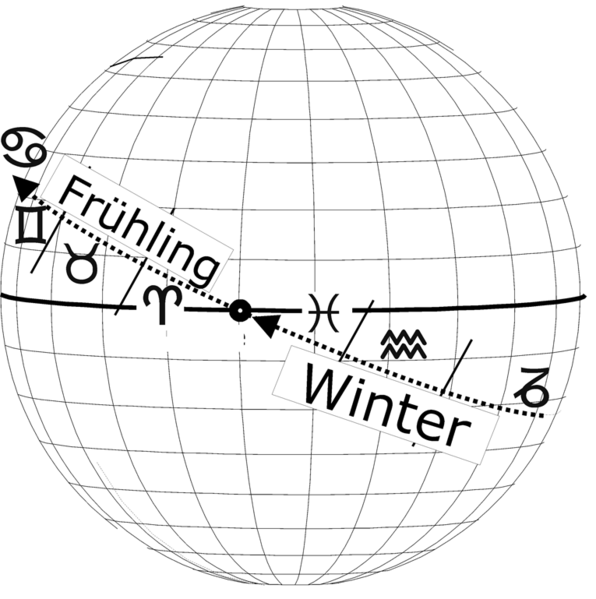
Western Astrology Vs Vedic Astrology: Sun Vs Moon
The Western system of astrology is largely based on the Sun. The Vedic system of astrology places more emphasis on the moon and its positioning in the birth chart. The Sun changes signs every month whereas the moon changes signs every 2.5 days. When a Western astrologer refers to a person’s sign he is referring to their sun sign whereas a Vedic astrologer is most often referring to the moon sign. In Vedic astrology, the Sun is actually classified as a cruel planet.
Birth Chart Layout
The Western astrologers draw the western astrology chart in a circular shape dividing 360 degrees into signs. Symbols mark the signs and planets. In Vedic astrology, there are many regional differences but there are two predominant ways of representing a birth chart. The South Indian chart has a box-like layout where each square always represents a particular sign. The planets are marked in each house and the ascendant is indicated in the appropriate sign square in clockwise order. However, in the North Indian format, a box is divided into diamonds and rectangles by a pattern of crisscrossing lines forming 12 divisions. The topmost diamond is always the first house and the house counts progress counter-clockwise. Signs and planets fill the template.
Houses
The interpretation of houses is very similar in many ways between the two systems with certain points differing sharply. Vedic astrology has added far more attributes to each house than Western astrology has. One major difference between the systems is that in Vedic astrology the houses are further classified into the kendra houses (angular houses in Western astrology), trikon houses (trines). There are trik houses or triksthanas, upachaya houses and many more details that have no equivalent in Western astrology.
Aspects
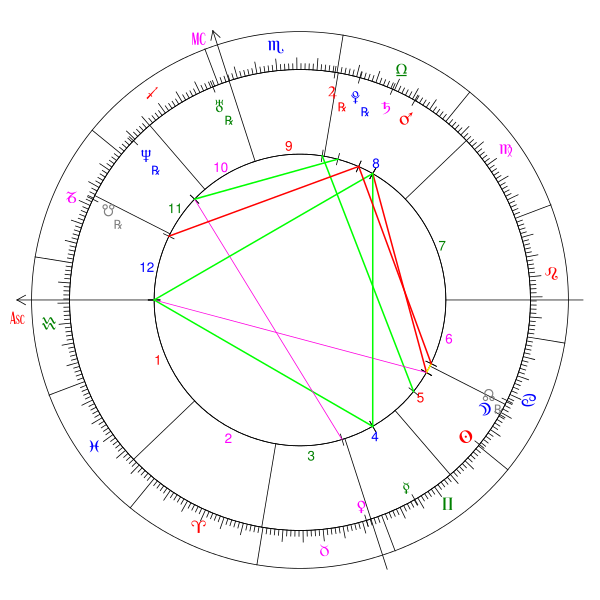
The types of aspects differ between the two systems. Western astrology uses the five Ptolemaic aspects of conjunction, sextile, square, trine, and opposition. The planets aspect the angles and other planets. Vedic astrology uses the concept of conjunction and aspect on the opposite house as well as the planet in the aspected house. Some planest have aspects in addition to this aspect. Western astrology uses aspect patterns like Grand Trines, Yods, T-squares, etc. Vedic astrologers do not use these concepts. Vedic astrology uses certain patterns formed called yogas. The type of aspect can be classified as good or difficult in Western astrology. The nature of the planet making the aspect determines if it is positive or negative in Vedic astrology.
Strength And Weakness
The rules for determining the strength and weakness of a planet are different in the Western and Vedic systems of astrology. Vedic astrology studies the strength of the dispositor of each planet and this influences how strong or weak a planet is. There is no emphasis on the dispositor of a planet in Western Astrology.
Interaction Between Planets
Vedic astrology uses the concept of combustion of a planet more than the Western astrologers do. The Vedic astrologers give more importance to the lunar phases than the Western astrologers do. Vedic astrology has names and descriptions of the lunar phases called tiWthis. Vedic astrology considers true planets that are too close to each other to be in a planetary war whereas Western astrology does not use this concept.
In Vedic astrology, planets get directional strength or digbala based on the house that they are placed in regardless of the sign. Western astrology does not use this concept. Vedic astrology and some western astrologers use a mutual exchange or parivartan. Western astrologers have the concept of fallen planets which is the same as neecha planets in Vedic astrology. Vedic astrology, however, has certain rules called neecha bhanga by which a fallen planet reverses its role.
Nature Of Planets
Western astrology philosophy considers Saturn as a difficult planet whereas Vedic astrology defines planets as malefic and benefics. It then goes further to define conditional malefics and benefics as well as conditional friendships.
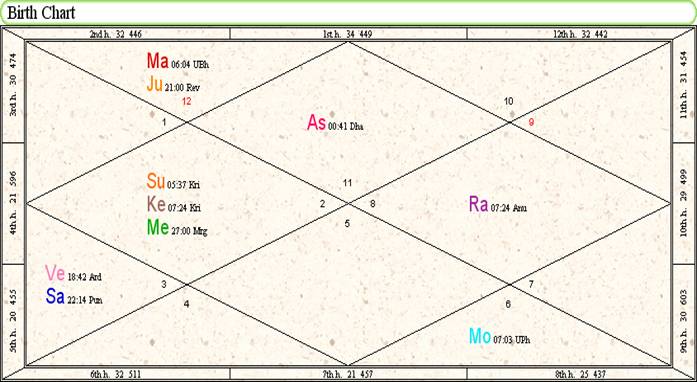
Divisional Charts
Vedic astrology relies on harmonic or divisional charts to reveal more about certain areas of a person’s life. The divisional charts are very sensitive to the difference in birth time and are used for birth time rectification by some Vedic astrologers.
Nakshatras Or Lunar Mansions
Vedic astrology also uses 27 nakshatras each covering 13 degrees and 20 minutes of the zodiac. Western astrology does not have nakshatras. Other types of astrology such as Chinese and Tibetan astrology that are based on lunar calendars have lunar mansions but they are 28 in number.
Followers of Vedic astrology give Nakshatras importance in day to day life as the nakshatra that the moon is transiting on any given day influences how suitable the day is for auspicious activities.
Addressing Different Aspects Of Life
Vedic astrology has innumerable texts and traditional systems on the interpretation of a birth chart and some of them can be very harsh. The amount of detail and the innumerable aspects of human life that Vedic astrology addresses is astounding. The Vedic system believes that the birth chart shows us our fixed unavoidable karma in life. Vedic astrology offers remedies to balance negative karmas.
Time Periods Or Dashas
Vedic astrology uses a system of time periods or dashas where a person has certain fixed periods that are ruled by specific planets. The dashas are used to interpret what the main focus or flavour of that time is going to be in that person’s life. Sometimes there are positive planetary combinations or placements in a chart that so not get to fructify as the person does not get to run the dasha of that planet in their lifetime. One of the most popular dasha systems used is Vimshottari Dasha but there are many others,
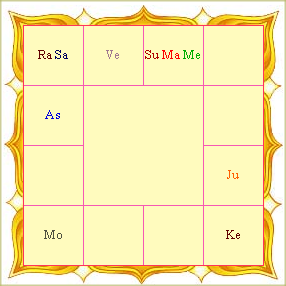
Synastry
Western astrology uses synastry to compare and asses the compatibility of two people. Vedic astrology uses various points based on the moon signs to study the compatibility of two people, especially for marriage.
Transits
Western and Vedic astrology both study transits. Western astrology prediction has more focus on the solar return and a technique called progression. Vedic astrology transits influence predictions in a big way.
There are many differences between Western astrology and Vedic astrology. However, both systems have excellent astrologers. In the end, it amounts to how well the person applies the concepts of their chosen type pf astrology to the birth chart. Regardless of the rules the success of a birth chart reading in Western astrology vs Vedic astrology solely depends on how well the concepts to the chart are applied. One must appreciate each system for how well it serves its purpose.




